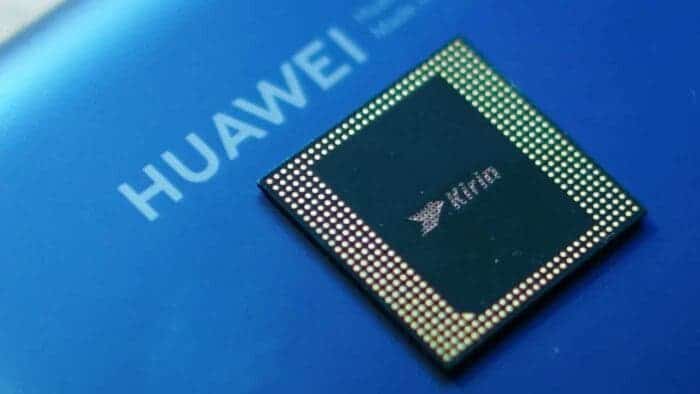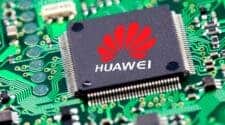The first quarter of 2024 has brought interesting developments in the mobile processor (SoC) market, with established players like Apple and Qualcomm facing resurgent competition from Chinese companies like Huawei and Unisoc. This report analyzes the latest data from Canalys to provide a comprehensive picture of the current landscape.
The Mobile Processor Landscape in Q1 2024: A Shifting Balance of Power

Huawei’s Strategic Comeback with HiSilicon
Huawei’s HiSilicon division has made a significant comeback in the smartphone SoC market. After a hiatus due to US sanctions, Huawei reintroduced its Kirin chips with the Mate 60 line earlier this year. This strategic move has yielded positive results, with HiSilicon shipping over 8 million chips and generating $6 billion in revenue in Q1 2024. Notably, the launch of the Pura 70 smartphone equipped with the latest Kirin chipset further bolstered their performance.
However, it’s important to acknowledge that HiSilicon’s chips might not be as technologically advanced as those from competitors who have access to the most cutting- edge foundries. Despite this technical limitation, Huawei seems to be enjoying strong market reception, particularly within China.
Giants of the Industry: Apple, Qualcomm, and MediaTek
While Huawei and Google (with its 2 million chips shipped) are making strides, the major players in the mobile SoC market remain Apple, Qualcomm, and MediaTek. Samsung sits in a unique position, trailing behind the leaders but boasting a significant presence compared to the newcomers.
Samsung experienced a slight decline in unit shipments (-18%) compared to Q1 2023, selling around 18 million chips. However, the company managed to increase its margins significantly, achieving a revenue of $9 billion, representing a remarkable 33% growth year-over-year. This indicates Samsung’s ability to command higher prices for its processors despite the lower volume.
A Tale of Three Titans: Diverging Fortunes
Looking at the top three players, we see a contrasting picture. Apple retains its dominance in terms of revenue, generating a staggering $56 billion from its A-series chips. However, the company is facing a significant decline in unit shipments (-16%), selling only 49 million chips in Q1 2024 compared to the same period last year. This decrease in volume also translates to a slight decline (-6%) in overall revenue.
MediaTek, on the other hand, thrives on volume. The company leads the pack in terms of units shipped, a staggering 114 million in Q1 2024. However, their focus on lower-cost solutions translates to lower margins. MediaTek’s revenue from these chips stood at $23 billion.
Qualcomm occupies a middle ground between Apple and MediaTek. The company shipped around 75 million chips in the first quarter, generating $37 billion in revenue. This indicates a strong balance between volume and profitability for Qualcomm.
The Rise of Chinese Players: Unisoc Joins the Race
Another trend to watch is the emergence of Chinese players like Unisoc. Similar to MediaTek, Unisoc focuses on high-volume, low-cost processors. The company saw a significant increase in unit shipments (+64%) in Q1 2024, reaching 26 million. Nevertheless, their revenue remained relatively low at $2 billion.
Looking Ahead: A Competitive Landscape
The mobile SoC market in Q1 2024 presents a dynamic picture. Established giants like Apple and Qualcomm face resurgent competition from Huawei and the rise of Chinese players like Unisoc. While Apple maintains its lead in revenue, its declining volume suggests potential vulnerability. MediaTek dominates in terms of unit shipments but struggles with lower margins. Qualcomm finds itself in a relatively stable position.
The strategic comeback of Huawei and the growth of Unisoc highlight the increasing competitiveness of the Chinese market. It remains to be seen how these trends will evolve in the coming quarters. Additionally, the impact of ongoing technological advancements and potential geopolitical shifts will be crucial factors to consider in the future of the mobile SoC landscape.
Further Considerations
This analysis primarily focuses on unit shipments and revenue generated by mobile SoC vendors. However, a more comprehensive picture would also consider factors like:
- Technological advancements: The capabilities and features offered by different SoCs.
- Market segmentation: How SoCs cater to different segments of the smartphone market (e.g., flagship, mid-range, budget).
- Regional variations: The performance of different vendors in specific geographical regions.
By incorporating these additional aspects, a deeper understanding of the mobile SoC market dynamics can be achieved.
The Mobile Processor Landscape: Beyond the Numbers

The data from Canalys provides a valuable starting point for understanding the mobile SoC market. However, to gain a more nuanced perspective, it’s crucial to delve deeper into the factors that influence market trends and consumer choices.
The Power of Innovation: Beyond Benchmarks
While raw processing power and benchmark scores often dominate headlines, these metrics only paint a partial picture. Mobile SoCs are increasingly designed with specific functionalities in mind, such as enhanced artificial intelligence (AI) capabilities, improved image processing, and efficient power management.
For instance, a flagship SoC might boast impressive benchmark scores but struggle with battery life. Conversely, a mid-range SoC might prioritize power efficiency over raw power, making it ideal for everyday tasks without compromising battery life. Consumers, particularly those outside the tech-enthusiast niche, often prioritize features and user experience over abstract benchmark numbers.
Market Segmentation: Catering to Diverse Needs
The smartphone market is far from monolithic. It caters to a wide range of users with varying needs and budgets. This necessitates a diverse range of SoCs to cater to these different segments.
-
Flagship SoCs: These top-of-the-line processors are designed for power users who demand the absolute best in terms of performance, features, and raw processing power. They are typically found in premium smartphones and cater to gamers, content creators, and early adopters of new technologies.
-
Mid-Range SoCs: This is the sweet spot for many users, offering a good balance between performance, features, and affordability. Mid-range SoCs are powerful enough to handle most everyday tasks smoothly, including gaming, social media, and multimedia consumption. They are the workhorses of the smartphone market, found in a vast array of devices.
-
Budget SoCs: As the name suggests, these processors prioritize affordability over raw power. They are ideal for basic tasks like calling, texting, web browsing, and light social media usage. Budget SoCs are crucial for expanding smartphone accessibility to emerging markets and budget-conscious consumers.
Regional Variations: A Globalized Yet Fragmented Market
The mobile SoC market exhibits significant regional variations. Factors like consumer preferences, government regulations, and carrier partnerships all influence which SoCs dominate specific markets.
For instance, North American and European markets often favor high-performance SoCs found in flagship smartphones. Conversely, price sensitivity might be a more significant factor in developing markets, leading to a stronger presence of mid-range and budget SoCs. Additionally, government regulations, such as those surrounding 5G technology, can influence the adoption of specific SoCs in certain regions.
The Evolving Landscape: Geopolitical Shifts and Technological Advancements
The mobile SoC market operates within a dynamic geopolitical landscape. Trade tensions, sanctions, and export restrictions can significantly impact supply chains and chip availability. The ongoing trade war between the US and China, for example, has had a ripple effect on the industry, with companies like Huawei facing challenges in acquiring advanced manufacturing processes.
Furthermore, technological advancements are constantly reshaping the mobile SoC landscape. The race to develop the next generation of chip manufacturing processes (e.g., 3nm, 2nm) is a major driver of innovation. Companies that can secure access to these advanced foundries will likely hold a significant competitive advantage.
Conclusion: A Market in Flux
The mobile SoC market in Q1 2024 is a story of resilience, innovation, and regional diversification. Established players like Apple and Qualcomm are facing resurgent competition from Huawei and the rise of Chinese companies like Unisoc. The focus on unit shipments versus revenue highlights the contrasting strategies employed by different vendors.
Looking ahead, factors like technological advancements, regional variations, and geopolitical shifts will continue to shape the mobile SoC landscape. It will be intriguing to see how these trends evolve and how established players adapt to the changing dynamics of this vital and ever-evolving market.





